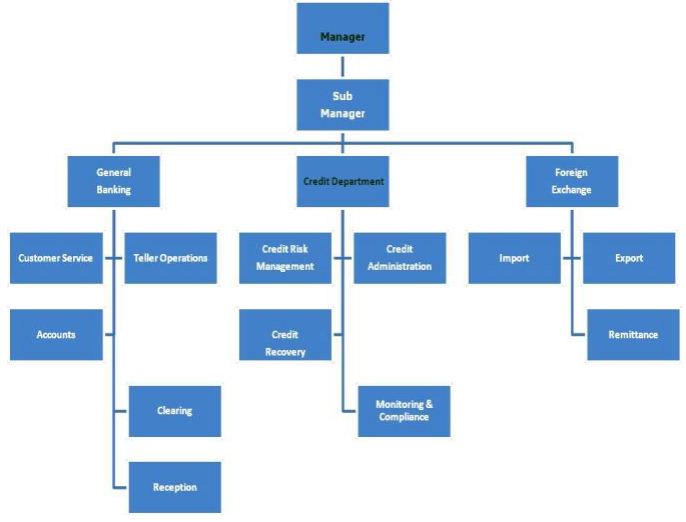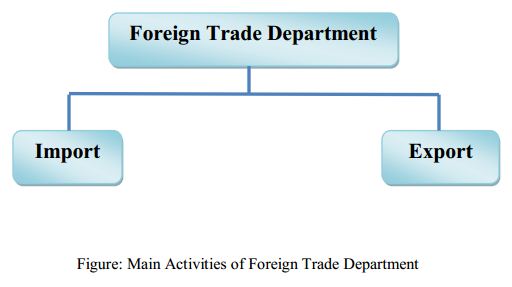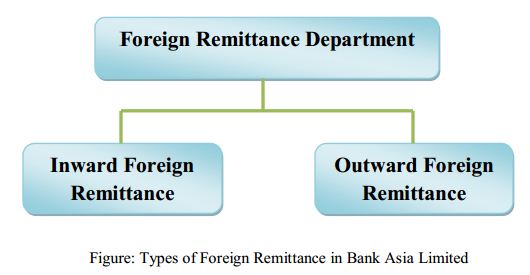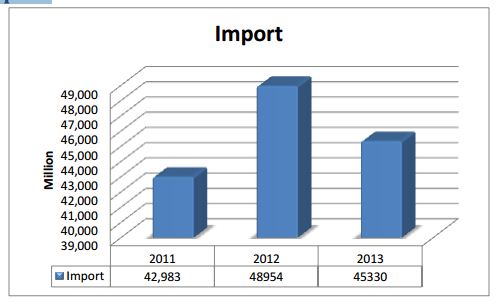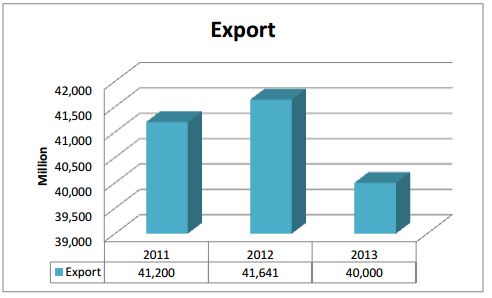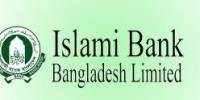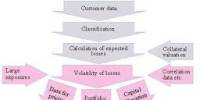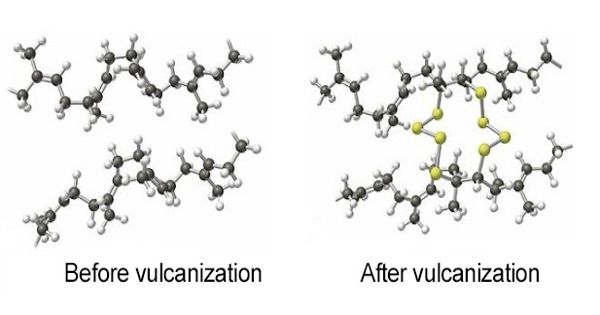The report stands for foreign trade activities in Bank Asia Limited (Corporate Branch). Foreign trade operation is one of the significant functions of the bank. It plays a vital role in overall economy of the country. Foreign trade contains Import and Export section and foreign remittance department contains inward and outwards remittance. In the report, the entire procedure has been published with the full of required data. All the clauses and steps are clearly mentioned in this report. The details about Letter of credit i.e. classification of L/C, L/C opening procedure, types of L/C, L/C payments moods, required documents, documents checking and transmitting L/C.
Amendment, why it is required and when is needed and lodgment system. When document is going out retire what the last step of retirement and reports to the Bangladesh Bank. And also disclose the matter about export procedure. The procedure began to get the ERC (Export registration certificate) by chief controller of import & export office. After that, receiving the letter of credit and advising L/C, necessary document collection and also reports to the
Bangladesh Bank. At the end of export section, bank issued PRC (Proceeds Realization Certificate) for the exporter. Last but not the list, the foreign trade remittance process and performance analysis. Here expose export & import growth. The export growth is positive impact for economy.
Introduction:
Achievement of high economic growth is the basic objective of present economic policy of Bangladesh government. To achieve this objective, the banking sector plays an important role. Bank Asia limited is one of the banks. It is a new entrant in the private banking scenario of Bangladesh. It also operates in Bangladesh for a long time as a country’s one of the good bank. Bank Asia limited conducts all types of commercial banking activities. The core service or business comprises of Import/Export finance, Working capital finance and corporate finance. Foreign trade operation is one of the most important activities of the bank. It helps corporate clients build their businesses by providing financial and strategic advice and products. Foreign trade contains Import and Export section and foreign remittance department contains inward and outwards remittance.
History of Bank Asia Limited:
Bank Asia Limited is third generation bank and scheduled commercial Bank in the private sector which established on 27th November in 1999 under the banking company act 1991 and incorporate in Bangladesh as a public limited company under the company act 1994 to carry out banking business in Bangladesh. It has been launched by a group of successful entrepreneurs with recognized standing in the society. The management of the bank consists of a team led by senior bankers with decades of experience in national and international markets. The senior management team is ably supported by a group of professionals many of whom have exposure in the international market. Within a short period of time Bank Asia is able to disclose its selfexistence and established its own position in the market as one of the first growing local private bank at present it has 50 branches all over the Bangladesh. Since its inception in 1999, it set a milestone by acquiring the Bangladesh operations of the Bank of Nova Scotia of Canada, first in the banking history of Bangladesh. Again in 2002 the bank acquired the Bangladesh operations of Muslim Commercial Bank Ltd. (MCB). In the year 2003, the bank went public by offering shares to the general investor and in 2004 the listed itself with the stock exchange.
The asset and liability growth has been remarkable. Bank Asia has been actively participating in the local money markets as well as foreign currency market without exposing the bank to vulnerable positions. The bank’s investment in treasury bills and other securities went up noticeably opening up opportunities for enhancing income in the context of a regime of gradual interest rate decline.
Bank Asia Limited started its service with a vision to serve people with modern and innovative banking products and services at affordable charge. Being parallel to the cutting edge technology the bank is offering online banking with added delivery channels like ATM, Tele-banking, SMS and Net banking. And as part of the bank’s commitment to provide all modern and value added banking service in keeping with the very best standard in a globalized world.
Organogram of Bank Asia Limited:
Summary of the Project:
Export and import play a vital role of our national economy. In this report I have discussed about which strategy the company are going to follow for their international trade. Moreover, I have showed some important diagram to analysis the performance of export and import sectors for three years.
Origin of the Project:
As a compulsory part of Internship program, this particular report is being prepared on the proposed topic “Foreign Trade Activities in Bank Asia Limited (Corporate Branch)”. The intention was to give an opportunity to the students to gain some real world experience by working in a practical environment.
Objective:
Broad Objectives:
To examine and analysis overall foreign exchange activities.
Specific Objectives:
- To learn about foreign trade activities (Export & Import).
- To know about how to issuing L/C, Advising L/C etc.
- To be acquainted with the Export & Import required documents.The consequence process of Transmitting L/C, L/C amendment, & Lodgment system.
- To get a practical knowledge about Export procedure and the system of foreign remittance.
Methodology:
This report has been prepared on the basis of experience gathered during the period of internship and my own learn and understanding. The entire process has been made by collecting primary data which played a vital role and easy to write down the report and secondary data was needed for supportive structured buildup to the report.
Primary Data:
- Direct conversation with the bank officers.
- Daily activity conducted by me at the bank.
Secondary data:
- Annual report of Bank Asia.
- Web browsing.
- Journals and Books.
Foreign Trade Activities in Bank Asia Limited (Corporate Branch)
Banking is a service-oriented industry. Services of varied nature are being rendered to the customers and the general public. From the beginning to till now Bank Asia is strongly committed to provide a better quality service to the customer and at a time the authority is providing an excellent facility to the employees. The services corporate banking offers are vast and wide. The bank contains three departments at a time – General banking, Credit & Marketing department and Foreign exchange. Foreign exchange is one of the most important activities of
the bank.
Foreign Exchange:
Foreign exchange means the exchange of currency in terms of goods from one country to another country. This is the most well-known and well-organized uniform in world business. Foreign exchange division includes the following departments:
1. Foreign Trade department and
2. Foreign Remittance department.
Foreign Trade department:
Foreign trade means the exchange of foreign currency for the trade purpose between two countries. In other words, foreign exchange deals foreign financial transactions related to trade or business. Foreign trade department has two sections.
Before discussing the import and export section, some concepts related to foreign trade should be clarified.
Concepts:
Important concepts of foreign trade as per UCPDC (Uniform Customs and Practice for Documentary Credit) 600 are discussed below:
- Applicant/Opener/Importer/Buyer: All of these names are using for the same purpose. Applicant means the party on whose request the credit is issued.
- Opening Bank/Issuing Bank: A bank is issue credit on behalf of applicant to the opposite party.
- Exporter/Seller/Beneficiary: Beneficiary means the party in whose favor a credit is issued.
- Advising bank: Advising bank means the bank that advises the credit at the request of the issuing bank.
- Nominated bank: The bank with which credit is available is termed as Nominated Bank of that credit. If no bank is mentioned in the credit as nominated bank, all banks are nominated bank.
Methods of Payment in International Trade:
To succeed in today’s global marketplace and win sales against foreign competitors, exporters must offer their customers attractive sales terms supported by the appropriate payment methods. Because getting paid in full and on time is the ultimate goal for each export sale, and appropriate payment method must be chosen carefully to minimize the payment risk while also accommodating the needs of the buyer. There are four primary methods of payment for
international transactions.
1. Advance Payment: In term of advance payment, the importer pay advance before the shipment date. That means payment is received before the ownership of the goods is transferred. Payment in advance is the least attractive option for the importer or buyer because it creates unfavorable cash flow. Foreign buyers are also concerned that the
goods may not be sent if payment is made in advance.
2. Consignment Payment: Payment is sent to the exporter only the goods have been sold by the foreign distribution to the end customer. That means exporter make shipment to his authorized agent in importing country, agent sell the goods and make profit to the exporter. This is very risky for the exporter because exporter is not guaranteed payment. This method is most practice in developed country.
3. Documentary Collections: Documentary Collection is an important bank payment method under, which the sale transaction is settled by the bank through an exchange of documents. In this process seller and buyer make an agreement regarding shipping documents such as original bill of lading, bill of exchange, packing list, certificate of
origin, etc. However, It involve using a draft that requires the importer to pay the face amount either at sight (document against payment) or on a specified date (document against acceptance). Documentary Collections are issued to the Uniforms Rules for Collection (URC). Documentary Collections make easy import-export operations within low cost. But it does not provide same level of protection as the letter of credit as it does not involve any kind of bank guarantee like letter of credit.
4. Letter of Credit (L/C): A letter of credit is the most well-known method of payment in international trade. Under an import letter of credit, importer’s bank, importer’s bank guarantees to the supplier that the bank will pay mentioned amount in the agreement, once supplier or exporter meet the terms and conditions of the letter of credit. In this method of payment, L/C plays an intermediary role to help complete the trade transaction. The bank deals only in documents and does not inspect the goods themselves. Letters of Credit are issued subject to the Uniforms Customs & Practice for Documentary Credits (UCP). This set of rules is produced by the International Chamber
of Commerce and Industries (ICC).
Letter of Credit (L/C)
Letter of Credit serves as a bridge between buyers and sellers around the world in the exchange of goods and commodities. Letter of credit is an instrument issued by the bank on behalf of the importer in favor of the foreign supplier or his banker. The L/C is established by the overseas buyer through a bank in his country in favor of the seller and is usually advised to the exporter by an authorized dealer in Bangladesh. In banking parlance, the importer is known as the applicant or opener. The bank opening the credit is the L/C opening bank or issuing bank. The
bank advising the credit is known advising bank and the exporter is the beneficiary. Procedure to open an Letter of Credit (From import and export perspective):
The cart below shows how participants are involved in the process of opening and payment of L/C:
1. The Applicant and the Beneficiary negotiate terms and condition of the L/C as per the agreement they have made.
2. The Applicant applies to the Issuing Bank to issue the L/C on an application form.
3. The Issuing Bank require the following documents from the applicant:
a) Formal contract between the importers and exporter.
b) Pro-forma Invoice (an invoice through which the exporter informs the importer about the kind and qualities of goods to be sent, their value, time of shipment and important specifications).
c) Buyer’s purchase order. After inspecting all these documents the bank issues the L/C and forwards it to the Advising Bank.
4. The Advising Bank checks the apparent authenticity of the L/C and advises the L/C to the Beneficiary.
5. The Beneficiary checks if the L/C complies with the formal contract and if all terms and conditions specified in the L/C can be satisfied and ships the goods to the importer.
6. The Beneficiary assembles the documents specified in the L/C, checks the documents for discrepancies with the L/C, draws the draft and presents the draft and the documents to the Advising Bank.
7. The Advising Bank inspects the draft and the documents against terms and conditions of the L/C and forwards them to the Issuing Bank.
8. The Issuing Bank checks if the documents comply with the L/C and makes a payment immediately (if the L/C is available by sight) or on a certain date (if L/C is available by deferred payment).
Classification of L/C:
There are three types of L/C offered by the Bank Asia Corporate branch. These are:
1. Sight L/C: Payment must be made within five working days after the document has been received from the exporter.
2. Deferred L/C: Payment must be made on or after the due date i.e. Shipment date or Bill of lading date. It is usually open for 60 days, 90 days and 120 days this is totally depends on the party demand.
3. Back to Back L/C: Usually this type of L/C is opened by the exporter. If exporter needs to import goods or equipment to manufacture the ordered goods, then he may import those goods or equipment by opening a L/C against mother L/C. the value of the back to back L/C can be 80% of the mother L/C.
Modes of Payments L/C:
Modes of payments of export bills under L/C:
1. Sight payment: When the importer will get back the imported commodities perfectly then the payment is being cleared instantly.
2. Deferred Payment: Which payment will be clear after a certain period of time that is fixed by the negotiation between the importer and exporter the payment tenure can be 60 days, 90 days, and 120 days. Which tenure will be select that is depends on negotiations.
Import
When a country order to purchase the goods and services from the other country, in order to the scarcity then it is called import. According to import and export control act, 1950 the office of chief controller of import and export provides the import registration certificate (IRC) to the importer. After obtaining this, person has to secure a letter of credit authorization (LCA). And then a person becomes a qualified importer. He is the person who requests or instructs the opening bank to open an L/C. He is also called applicant of the credit.
Step-1: L/C issuing
This is the first terms to import issuing the L/C. Letter of credit is the reliable sources of both the parties importer and exporter in order to get payment properly in the right time. The transaction originates when the exporter in London and the importer in Dhaka enter into a contract of sale. The contract covers all important particulars like value and quantity of goods, the due date for shipment, method of payment etc. on the stipulations is that a letter of credit should be opened in favor of the exporter.
For opening L/C is contain a required documents which is given below:
1. L/C application form which contains the details about applicant and beneficiary. Total L/C amount, country of origin means the products manufacturing areas, types of payment moods like At sight, DAF, CFR, FOB, Negotiation, and Acceptance etc., Port of shipment, and date of shipment. Insurance cover note policy also been mentioned. Draft amount, rate of dollar, equivalent TK. of BD, margin, charges, commission and other charges.
2. IMP form is containing H.S code (Harmonize system code), it implies to categories of product. Quantity of goods, Invoice value, Registration no. of L/C authorization form with Bangladesh Bank Registration unit. And the carrier name like air or boat and other terms and conditions. The IMP forms must be submitted in duplicate by the importer.
3. LCA form (Letter of credit authorization) which includes different rules and regulation about the imported items and imports. Letter of Credit Authorization issued by the importer’s bank is necessary for import purpose.
4. Agreement form that includes details contract between the parties.
5. Charge Document After complete all above mentioned appropriately then have to fulfill other papers and
documents with verify of the self-signature and after that submit it to bank. Others paper and documents:
1. Trade License.
2. Import Registration Certificate (IRC).
3. Income Tax Declaration of TIN no.
4. Membership Certificate.
5. Memorandum of Association (Only for Limited companies).
6. Registered Deed (Only for Partnership firms).
7. Photograph.
8. Insurance cover note copy and money receipt.
9. Pro-forma Invoice copy.
Step-2: Transmitting L/C
After issuing the L/C application and L/C authorization is transmitted to the advising bank. Letter of credit can be transmitted to the advising bank by three moods. These are Telex, Courier, and SWIFT (Society for worldwide inter telecommunication network). The Bank Asia Ltd. uses the SWIFT when L/C is disposed in the following manner:
1. First two copies sent to the advising bank original for beneficiary and second copy for advising bank.
2. One copy to Head office.
3. One copy is sent to the importer.
4. One copy is sent to the Bangladesh Bank.
5. One copy is sent to the C.C.I. &E (Chief controller of Imports and Exports).
6. One copy is retained as office copy.
Exporter receives the L/C through the advising bank. Receiving L/C, exporter produce the goods as per the requirements and ships it before due date. If any amendment is required, exporter contacts with the importer. If the importer agrees to do so, then the issuing bank issue amendment for the L/C.
Step-3: Document checking
When issuing bank received the entire document from nominated bank then they need to check for further documentation process. Followings are the important documents to be obtained by the issuing bank after receiving the document from the nominated bank:
1. Head office approval (For new importer).
2. Pro-forma invoice.
3. L/C application form duly filled in and applicant’s signature verified thereof.
4. Guarantor’s signature in the L/C application from, if required.
5. Insurance cover note with money receipt along with the proof of payment of insurance premium.
6. Insurance checked for value (Insured amount must be indent/ PI value plus 10%) validity, goods, mode of transportation, shipment from and to etc.
7. IMP form duly signed.
8. LCA (Letter of Credit Authorization form) properly fill up and duly signed.
9. Valid IRC held.
10. Membership Certificate from chamber of commerce / Business association.
11. VAT registration certificate.
12. Up to date income tax certificate.
Step-4: Lodgment
Lodgment means payment of import bills or transfer of funds for import bills. Here L/C issuing bank will arrange to make payment against L/C through SWIFT. Through SWIFT a telex message is transmitted to the correspondent bank ensuring that payment has made. After checking the import-negotiating document, if no discrepancy is found then it treated to be accepted after the end of five banking days for the day of receipt of the document. If any discrepancy is found then the banker informs it to the importer whether is accepted the bill with discrepancies or not. If the importer does not accept, the banker informs it to the nominated bank within seven banking days from the date of receipt of the documents, otherwise it is treated to be accepted and the opening bank must bound to pay.
Step-5: Retirement & Reports:
After the payment of the import bill, the branch prepares the retirement vouchers to reflect the amount of cost & other charges from importer and adjustments of margin. Thereafter the documents are handed over to the importer against proper acknowledgment after certificate & endorsement.
Steps involved in retirement are:
1. Calculation of interest if any.
2. Entry in the register.
3. Endorsement is made on the back of the bill of exchange as received payment.
4. Acknowledgement received on the office copy of the cost memo from the importer in his authorization agent.
5. Filling of the office copy.
After recording in the IMP form the particulars of the remittance the original copy of the IMP form along with a copy of the certified invoice is forwarded to the Bangladesh Bank with usual monthly returns. The duplicate copy of IMP form is retained by the branch. On the last working day of the month, the returns of bills lodged during the month should be sent to the Bangladesh
Bank along with original copy of the IMP form. The second should be filed with the Bill of Entry after clearance of goods. The third copy should be sent to Bangladesh Bank on failure of the importer to submit the Bill of Entry within time.
Export
When a country sells the product to the other country after fulfilling the self-demand then it is called export. Export trade can be enormous contribution on the national economy. The export trade of the country is regulated by the Import and Export control Act, 1950. There are a number of formalities, which an exporter has to fulfill before and after shipment of goods. The primary requirement is to engage in the business of import and export, registration with the Chief Controller of Imports and Exports (CCI&E).
These procedures are enumerated as follows:
Step-1: Advising L/C
Advising L/C is the first terms to export for a bank but in case of advance payment or documentary collections, this advising L/C step is not required. Obtaining the sales contract, the exporter should ask the buyer for letter of credit clearly staying terms and conditions of export and payment. When export L/C is transmitted to the bank for advising, the bank sends an advising letter to the beneficiary show that, L/C has been issued. Issuing bank sent two copies of L/C. Original copy is given to the beneficiary and the second copy is retained by the branch.
Step-2: Issuing of EXP
All exports must be declared on the EXP fro which the branch to their clients engaged in export trade supplies. The branch ensured that the exporter is registered with the CCI & E before certifying any export from. EXP is issued to the exporter and then the exporter will bring this EXP form and pass to the customs. An EXP form contains the following particulars:
1. Name & address of the authorized dealer.
2. Particulars of the commodity to be exported with code.
3. Country of destination.
4. Port of destination
5. L/C value in foreign currency.
6. Terms of sales.
7. Name and address of the importer.
8. Name of caring vessel.
9. Bill of lading.
10. No. & date.
Step-3: Collection of Document
The exporter makes shipment of goods and prepare document as per the agreement. The exporter must submit all the copies of the EXP from along with the other documents covering the exports to the branch within 14 days of shipment. Exporter prepares the required documents mentioned in L/C are as such:
1. Bill of exchange: The way of collecting export payment to the importer.
2. Bill of Lading: A bill of lading is a document issued by the shipping company or its agent, acknowledging the receipts of goods.
3. Insurance policy: In case of any accident to the product since the conveying period, according to insurance policy the insurance company will bound to compensate the damages product.
4. Certificate of origin: A certificate of origin declares the place of actual manufacturer or growth of the goods.
These documents should be submitted to the bank for negotiation. The respective officer must check all above documents and make sure about the terms and conditions are right or wrong. Thereafter, the nominated bank delivers the full document to the importer bank.
Step-4: Realization of Export Proceeds
The importer bank can only dispatch the money when all documents are delivered to them. Nominated bank realized the export proceeds within 120 days. The period prescribes by the Bangladesh Bank within which exporter must receive full foreign exchange proceeds of exporter in four months if the receipt of the full proceeds of any shipment is delayed beyond the period without a special authority from the Bangladesh Bank. Branch can make payment to the exporter by passing the Accounting Vouchers. The exporter will be liable to action under FER Act, 1947.
Step-5: Reports
After receiving the payment, branch certifies on the reverse of the triplicate copy of the form which retained with them and forward it to the Bangladesh Bank with the usual return. The quadruplicate copy is retained by the branch for record. The nominated bank must report duplicate EXP form to the Bangladesh Bank within 14 days of shipment.
Step-6: Issuing Proceeds Realization Certificate (PRC)
Finally, the nominated bank is issued Proceeds Realization Certificate (PRC) to the exporter. Once the export proceeds are realized, the exporter has to prepare bank certificate. Proceed Realization Certificate (PRC) should be submitted in the standard format issued at Bangladesh Bank for which exporters get reduction of an amount of money from their income tax.
Foreign Remittance Department
Bank Asia corporate branch is an authorized dealer. Foreign remittance represents of foreign currency receiving and converting. There are two types of foreign remittance, Inward foreign remittance and outward foreign remittance.
Inward Foreign Remittance:
In which remittance is get inside of country from the outside through TT, FDD, MC, and TC with the various purpose such as wage earning remittance. It means when people send money for family purpose. In export proceed means after getting the commodities and then payment.
Purpose of Inward Remittance:
- Family Maintenance.
- Indenting commission/Agency Commission/recurring agents commission.
- Realization of export proceeds.
- Donation/gift.
- Export brokers commission etc.
T.T. (Telegraphic Transfer): T.T. is an order for payment of money sent by telex or Cable. Funds are paid to the beneficiary in the foreign center usually on the same day. No loss of interest or expenses on stamp duty etc.
M.T. (Mail Transfer): M.T. is an instrument issued by a remitting Bank to the paying Bank advising in writing to make payment of certain amount to specific beneficiary. This involves loss of interest to the purchaser and for this reason banks can afford to make M.T. rate cheaper than T.T. rate.
F.D.D. (Foreign Demand Draft): A foreign demand draft is a negotiable instrument issued by a Bank drawn on other Bank with the instruction to pay of certain amount to the beneficiary of demand.
T.C. (Travelers Cheque): People usually use TC to meet their expenses for overseas travels. It reduces the risk of carrying currency notes. These are drawn in freely convertible currency.
Outward remittance:
In which remittance is going out from our country that is called outward remittance.
Purpose of Outward remittance:
- Education Purpose.
- Import Purpose.
- Exam fees etc
Performance Analysis
Import
From this graphical presentation we can see subsequent rises of import year to year. In 2011 the total import is 42,983 million taka. In between 2011 & 2012 the growth of import is 13.89% which enhanced by 5,971 million taka from the previous year and the total import is 48,954 million taka. After the next fiscal year 2013 the import was decreased 45,330 million taka by -7.40% growth. The shortage portion of this year is 3,624 million taka as counted less its previous year. Growth rate was negative in 2013 because of huge political unrest as importers couldn’t bring their desired goods for making products.
Since 2011 to 2013 in these five years the total amount of import is 137,267 million taka. In the total amount of 137,267 million taka were used by several sectors to import.
- Consumer goods 10%
- Capital machinery 4%
- Textile 3%
- Scarp Vessels 4%
- Petroliam product and oil 1%
- Raw cotton 6% and
- Cotton 2%
- Others 70%.
Export
The total export amount is 41,200 million taka. For the next year in 2012 the total export is 41,641 million taka which enhanced by 441 million taka with 1.07% growth to compare with the previous year. In the same way in 2013 export is decreased at 1,641 million taka by the total amount of 40,000 million taka with -3.94% growths. As I mentioned earlier that political unrest was the key reason for downsizing of export but in 2014, Bank Asia is expecting their growth will be 43% that is definitely a positive sign for national economy. The growth trend should have continued for country development. In order to make the strong economy export can play an important role. Large extent of export can create a huge opportunity i.e. employment opportunity, can be made strong local currency against foreign currency, build up strong capital market, reduce the poverty and so on. Exported items which are contributed for better growth those are:
- RMG (Ready-made garments) 40%
- Leather 10%
- Medicine 2%
- Frozen food 10%
- Tea 5%
- Jute goods etc. 20%
- Others 13%
Recommendation:
To get improvised the export and import sector of Bank Asia Limited, I have recommended to the company which factors should be given more importance. These are following below-
1. Bank Asia should keep an eye on the growth of export & import while it’s tend to turn into negative.
2. Bank Asia corporate branch is well decorated and also having a talent pull of employees there is no doubt, but there is a shortage of employees so Bank Asia should get enhanced the employee in foreign trade.
3. Bank should more concentrate on all categories client.
4. Bank Asia operating software “STEALER’’ should be changed, because most of the time it does not work which hamper employees attention and also consume more time.
Conclusion:
Export and import are playing key role to our country’s economy and each of bank is behind this massive success. Every bank builds up with a different activity on which they are specialized so as Bank Asia is specialized on Export and Import activities. From the beginning of this report I tried to show how Bank Asia does their export and import activities and on the basis of their activities how they performed in last three of years.
From the performance analysis we have seen that if government retain country’s political situation stable than growth of both export & import rises. In 2011 & 2012, Bank Asia had positive growth in export & import but later in 2013, growth was negative in both sectors. If we look into their future projection of growth, we see that from 2014 Bank Asia is expecting that growth will touch 43% in import sector if everything goes well.

